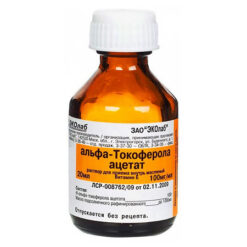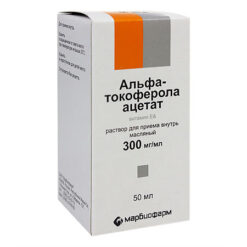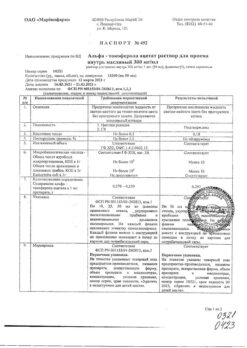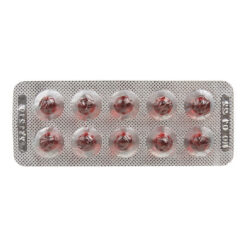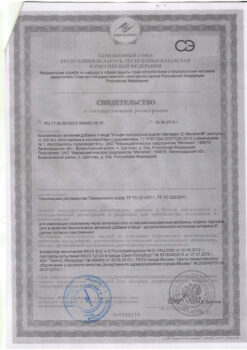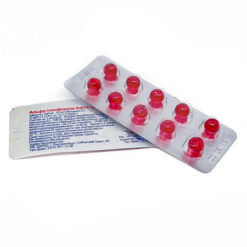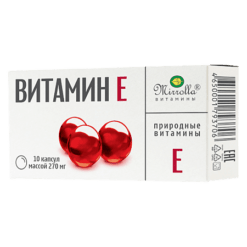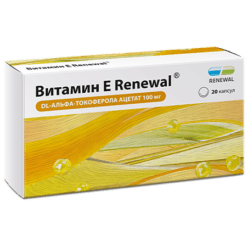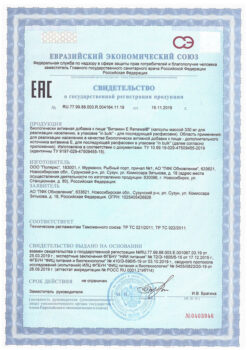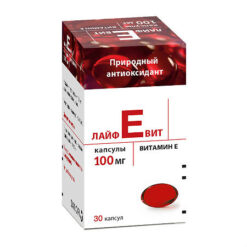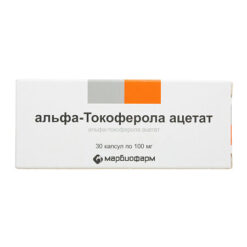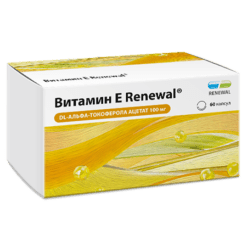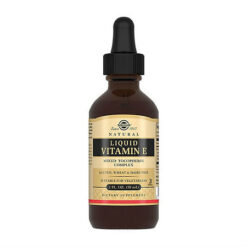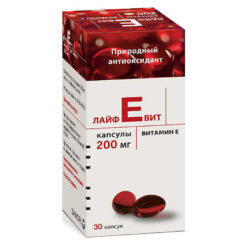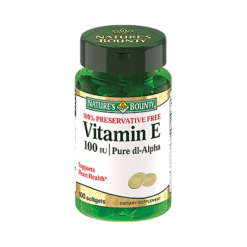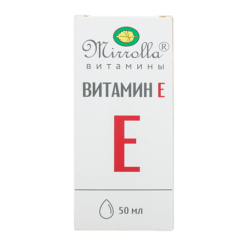No products in the cart.
Alpha-Tocopherol Acetate (vitamin E), 300 mg/ml 50 ml
€1.00
Out of stock
(E-mail when Stock is available)
Description Pharmacotherapeutic group: Vitamin Pharmacodynamics: Pharmacokinetics:
ATX: A.11.H.A.03 Tocopherol (vitamin E)
A fat-soluble vitamin. As an antioxidant, inhibits the development of free-radical reactions, prevents the formation of peroxides that damage cellular and subcellular membranes, which is important for the development of the body, the normal function of the nervous and muscular systems. Together with selenium inhibits the oxidation of unsaturated fatty acids (a component of the microsomal electron transport system), prevents hemolysis of red blood cells. It is a cofactor of some enzyme systems.
Absorption from the 12 duodenum (requires the presence of bile acid salts, fats, normal pancreatic function) is 50-80%. Binds to blood beta lipoproteins. Transport is difficult in protein metabolism disorders. ÒCmax is 4 hours. It is deposited in all organs and tissues, especially in adipose tissue. It penetrates through the placenta in insufficient amounts: fetal blood penetrates 20-30% of the concentration in the mother’s blood. It penetrates into breast milk.
It is metabolized in the liver to derivatives with quinone structure (some of them have vitamin activity). It is excreted with bile – more than 90% (some amount is absorbed again and is subjected to enterohepatic circulation) 6 % by the kidneys (as glucuronides of tocopherolactonic acid and its gamma-lactone). It is excreted slowly, especially in premature and newborn children, where its cumulation is possible.
.
Indications
Indications
Hypovitaminosis E;
Comprehensive therapy of conditions accompanied by increased need of the body for vitamin E:
In the state of recuperation after diseases that occurred with febrile syndrome.
Composition
Composition
How to take, the dosage
How to take, the dosage
For oral administration the drug is prescribed in the following dosages:
In diseases of the neuromuscular system (myodystrophy, amyotrophic lateral sclerosis, etc.) 50-100 mg per day (50-100 drops of 5% solution, 25-30 drops of 10% solution or 7-15 drops of 30% solution) for 1-2 months. The course may be repeated in 2-3 months.
In men with spermatogenesis and potency disorders it is 100-300 mg per day (100-300 drops of 5% solution, 50-150 drops of 10% solution or 15-46 drops of 30% solution) in combination with hormonal therapy for a month.
In case of threatened abortion, 100-150 mg per day (100-150 drops of 5% solution, 50-75 drops of 10% solution or 15-23 drops of 30% solution).
In case of habitual abortion and impaired intrauterine development of the fetus, 100-150 mg daily (100-150 drops of 5% solution, 50-75 drops of 10% solution or 15-23 drops of 30% solution) in the first 2-3 months of pregnancy daily or every other day.
In case of peripheral vascular diseases, myocardiodystrophy, atherosclerosis, 100 mg per day (100 drops of 5% solution, 50 drops of 10% solution or 15 drops of 30% solution) in combination with vitamin A. Course duration is 20-40 days, after 3-6 months the treatment can be repeated.
In case of skin diseases from 15 to 100 mg per day (15-100 drops of 5% solution, 7-50 drops of 10% solution or 2-5 drops of 30% solution) for 20-40 days.
1 drop of an eye dropper contains: α – Tocopherol acetate in 5% solution – 1 mg, in 10% solution – 2 mg; in 30% solution – 6.5 mg.
Interaction
Interaction
It enhances the effect of glucocorticosteroid drugs, nonsteroidal anti-inflammatory drugs, antioxidants.
Enhances the effectiveness and reduces the toxicity of vitamins A, D, cardiac glycosides.
Prescribing vitamin E in high doses may cause vitamin A deficiency in the body.
It increases the effectiveness of antiepileptic drugs in patients with epilepsy (who have increased levels of lipid peroxidation products in the blood).
The simultaneous use of vitamin E in a dose greater than 400 units/day with anticoagulants (coumarin and indandion derivatives) increases the risk of hypoprothrombinemia and bleeding.
Colestyramine, colestipol, mineral oils reduce absorption.
High doses of iron increase oxidative processes in the body, which increases the need for vitamin E.
Special Instructions
Special Instructions
It should be noted that newborns with low birth weight may have hypovitaminosis E due to low placental permeability (fetal blood contains only 20-30% of the vitamin E concentration in the mother’s blood).
A diet high in selenium and sulfur-containing amino acids reduces the need for vitamin E.
Synopsis
Synopsis
Contraindications
Contraindications
Increased individual sensitivity to the drug.
With caution: hypoprothrombinemia (against vitamin K deficiency – may increase with a dose of vitamin E over 400 IU), severe coronary atherosclerosis, myocardial infarction, increased risk of thromboembolism.
Overdose
Overdose
Symptoms: when taken over a long period at doses of 400-800 IU/day (1 mg = 1.21 IU) – blurred vision, dizziness, headache, nausea, extreme fatigue, diarrhea, gastralgia, asthenia; when taken over 800 IU/day for a long period – increased risk of bleeding in patients with hypovitaminosis K, Thyroid hormone metabolism disorders, sexual dysfunction, thrombophlebitis, thromboembolism, necrotic colitis, sepsis, hepatomegaly, hyperbilirubinemia, renal failure, retinal hemorrhage, hemorrhagic stroke, ascites.
Treatment: symptomatic, drug withdrawal, administration of glucocorticosteroid drugs.
Additional information
| Shelf life | 2 years. |
|---|---|
| Conditions of storage | In the dark place out of the reach of children at a temperature not exceeding 25 ° C |
| Manufacturer | Tula Pharmaceutical Factory, Russia |
| Medication form | oral solution |
| Brand | Tula Pharmaceutical Factory |
Other forms…
Related products
Buy Alpha-Tocopherol Acetate (vitamin E), 300 mg/ml 50 ml with delivery to USA, UK, Europe and over 120 other countries.


